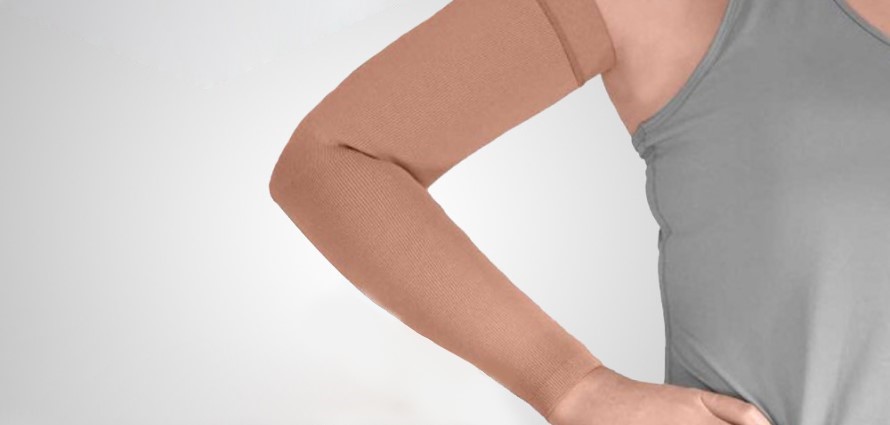Compression Therapy
Compression therapy is used to treat and maintain lymphedema, lipedema, chronic venous insufficiency, and other edematous conditions.

What is compression therapy?
Compression therapy includes the use of compression bandaging or garments to reduce and maintain swelling. It is a part of complete decongestive therapy which also includes manual lymphatic drainage, skin care, and exercise prescription. There are two phases of compression therapy/complete decongestive therapy: the intensive phase and the maintenance phase. Intensive compression management is designed to help reduce your swelling and limb volume and includes frequent wrapping with multiple layers of specialized compression bandages. This phase of treatment usually occurs right after diagnosis or after a flare up and is closely monitored by a certified lymphedema therapist. Following the intensive phase of compression therapy is the maintenance phase which includes the use of both day and night-time compression garments. This phase of treatment is used to maintain any reductions from the intensive phase. Compression garments should be custom fit to your body by a certified fitter and prescribed by a certified lymphedema therapist. Garments can include sleeves, gloves, stockings, vests, or other required articles. Breast Rehab therapists are trained to guide you through all phases of your compression therapy treatment.
Lymphedema
Lymphedema is a buildup of lymphatic fluid that leads to tissue swelling, most commonly in the hands/arms, chest, feet/legs, or trunk of the body. It is a chronic, lifelong condition that cannot be cured but can be managed well with proper treatment. There are two types of lymphedema: primary and secondary (or acquired) lymphedema. Secondary is more common than primary lymphedema. Primary lymphedema is usually genetic and occurs in people who are born with a compromised lymphatic system. Secondary lymphedema is acquired by people whose lymph nodes or vessels have been damaged as a result of vascular disease, surgery, injury/trauma, or treatment for some cancers (including breast, ovarian, colon, prostate and others). The leading causes of secondary lymphedema are lymph node removal and radiation therapy. Lymphedema can come on gradually or suddenly, sometimes many years after the damage occurs.
Lipedema
Lipedema is a chronic condition that affects almost exclusively women. It is characterized by the build-up of painful fat and swelling in the limbs, most commonly the legs. Lipedema can affect your arms, legs, hips, and buttocks and will not affect your feet or hands. The exact cause of lipedema remains unknown, but it tends to run in families and worsens with hormonal changes including puberty, pregnancy, and menopause. Lipedema cannot be cured or treated with traditional weight loss methods as it is not a condition caused by poor weight management or obesity. Although different from lymphedema, it is not uncommon that your lipedema may lead to lymphedema in time. This condition is specifically known as lipo-lymphedema. Breast Rehab therapists are trained to recognize and treat lipedema and lipo-lymphedema.
Chronic Venous Insufficiency
Chronic Venous Insufficiency (CVI) is a condition that occurs as a result of damage to the venous system. As the valves in your legs’ blood vessels incur damage, they begin to work less effectively. This inefficiency can lead to a pooling of excess blood in your legs, ultimately resulting in increased pressure and swelling. In addition to swelling in the legs, it is common to experience open areas on your legs called ulcers. Chronic Venous Insufficiency has a wide spectrum of disease ranging from varicose veins to open ulcerations to deep vein thromboses.
You may be experiencing CVI as a result of a slow decrease in function of the valves or due to a deep vein thrombosis* that has caused post-thrombotic syndrome. Regardless of the initial cause of your CVI our therapists are trained to recognize and safely treat all stages of Chronic Venous Insufficiency.
At Breast Rehab, all our therapists are highly trained to prescribe and administer compression therapy systems. Compression therapy will be used together with other therapy modalities to ensure you receive safe and expert care to get you back to doing what you love!
*Please note that deep vein thromboses can be a medical emergency and requires immediate medical attention from your primary care provider or a local emergency room/walk-in clinic.

